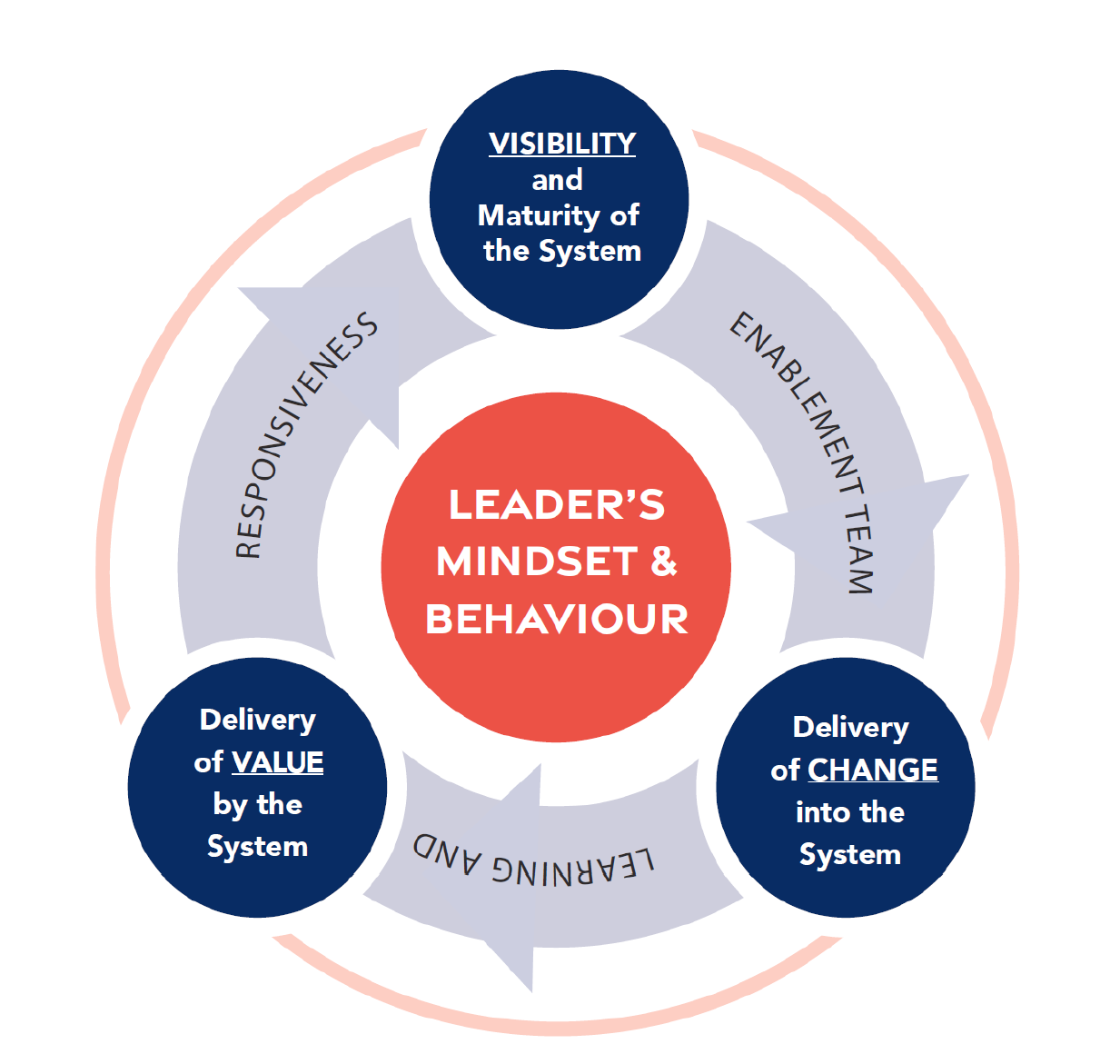
4 focus areas to accelerate your agile transformation
Changing a personal habit is very difficult. Taking up exercise, quitting smoking or learning to meditate are all practices we know are good for us, but find difficult to adopt. It is the same for organisations seeking to adopt agile as a way to work; most people would agree agile principles and practices are good for organisational health, but it is still difficult to transform a work system. How can we improve our chances of success?
Our answer...what areas we FOCUS our effort on; or
"what we pay attention to"
Deep leverage is required for transformation
To achieve true change across an organisation requires a critical mass to be reached where change in one part of the system 'leverages' the rest of the system to shift and embrace agile as a way to work. This tipping point can take a long time (and effort/money) if the change program fails to focus on what I’ll call “deep leverage points” of the system.
This post will talk about the four leverage points we see over and over again that, if addressed with focus, lead to significant systemic change across a system of work.
Focus area #1: leaders change their behaviour
I remember once I was facilitating a group of middle managers who were discussing an organisational challenge. The group was brainstorming ideas for how to resolve a complex problem when the CEO walked over to observe. The group immediately started to check for approval (of their ideas) with the CEO; trying to get a read on whether she would be supportive or not of each idea. In this moment the CEO had an opportunity to either enable or undermine the adoption of agile principles.
Fortunately, in this scenario the CEO reminded the team of the objective their problem related to and then told them that ‘how’ the problem is solved is up to them as they were closest to the work and had the most information. She instructed the team to think without fear or judgement and follow the creative process instead of seeking her ‘pre-approval’ of their ideas.
Recommendations:
Ensure leaders have enough support and coaching to shift their mindset and adjust their behaviour; this then signals to other leaders that they have permission to think and work differently.
Brief leaders frequently and ensure they consistently communicate the importance of the change and their personal belief in it. Townhall events or large internal broadcast meetings work well.
Focus area #2: change the goal of the system
How do we solve world hunger? Easy, change the goal of the global food system from making money to feeding people. As a leverage point, the goal of the an organisation's delivery system should shift from busyness and activity to valuable outcomes for customers, clients, citizens etc.
Recommendation:
Change the goal of your delivery system to VALUE delivery and away from activity-based work that emphasises output. Implement processes, associated artefacts and roles that focus on value delivered. This would include what is prioritised and planned to be delivered. Objectives and key results (OKRs) are one means to achieve this but not the only way. A simple focus on benefits-driven delivery can work to ensure the goal of the delivery system is focussed on the right things.
Focus area #3: change the structures in the system
There is a rather crass phrase that is used to describe when an agile transformation is superficial
“putting lipstick on a pig”.
Another similar phrase is “putting old wine into new bottles”. They both mean the same thing; not really changing anything and expecting agile to deliver improved delivery outcomes. Examples of change that isn’t really change include:
traditional reporting for agile teams
simply changing role titles (project manager to scrum master)
using agile methods to work in a traditional manner (using story points to manage team performance)
appointing a scrum master who is accountable for delivery outcomes
setting stretch objectives each sprint to ‘motivate’ an agile team
not adjusting teams structures; making existing teams adopt agile
designing an agile playbook upfront and enforcing consistent adoption
The list goes on and on, but the principle is the same; ensure that as the system (customers, managers, teams and sponsors) learns and has the ability to be changed, ‘rules’ can be challenged and broken where it makes sense.
Recommendation:
Have a process to identify areas of improvement (proposed changes to structures) and then the means to experiment. Often this can be in the form of an impediment management process that provides a way for bottlenecks in the flow of work to ‘bubble up” to leaders for action.
Focus area #4: collect delivery data
Agile can organically emerge within an organisation; usually from teams that have the most to gain from working differently. But when an organisation-wide transformation is being considered it requires a level of management (yep, that's right, we still need managers in agile organisations). Where do we direct our agile change first and why? This is where data comes in. Knowing where the delivery system has “bottlenecks” or impediments to the flow of value is one example of how data can inform decision making on where agile methods could be introduced. Other examples include team health, capacity to take on work, delivery confidence and reliability.
Recommendation:
Baseline the delivery system through the collection of data. We suggest collecting data on lead time to value or cycle time from idea to value, delivery confidence and capacity to take on work.
How Source Agility uses focus areas
At Source Agility we have created our Accountable Agility System™ that we use to help clients focus on the right areas so that they can accelerate the delivery of outcomes from their agile change or transformation programs. The image below shows the five areas we initially focus on:
Enabling the system to be visible (so we can inspect it and then adapt)
Enabling change to be delivered into the system (processes/structures)
Enabling the system to deliver value (moving away from outputs)
Helping leaders believe in the change (then change their behaviour)
Helping agile enablement/coaching teams, learn, adapt, and respond

To learn more about this system read our recent whitepaper on the topic; you can download it here.
Finals words / conclusion
Agile transformations can sometimes become bloated with activity and busyness instead of being laser focussed on the areas of the system that are the leverage points for change. This post challenges us to consider our own system of work and where we may need to pay extra attention and provide stronger change enablement support in order to have the impact expected.
Every organisation will have its own challenges and specific issues that require attention; this will mean additional focus areas to the ones shown in the above diagram. We recommend that transformation/change teams do an assessment of where they need to focus their effort before mobilising the program of work.
To learn more about the AAS including videos and access to free tools go here


